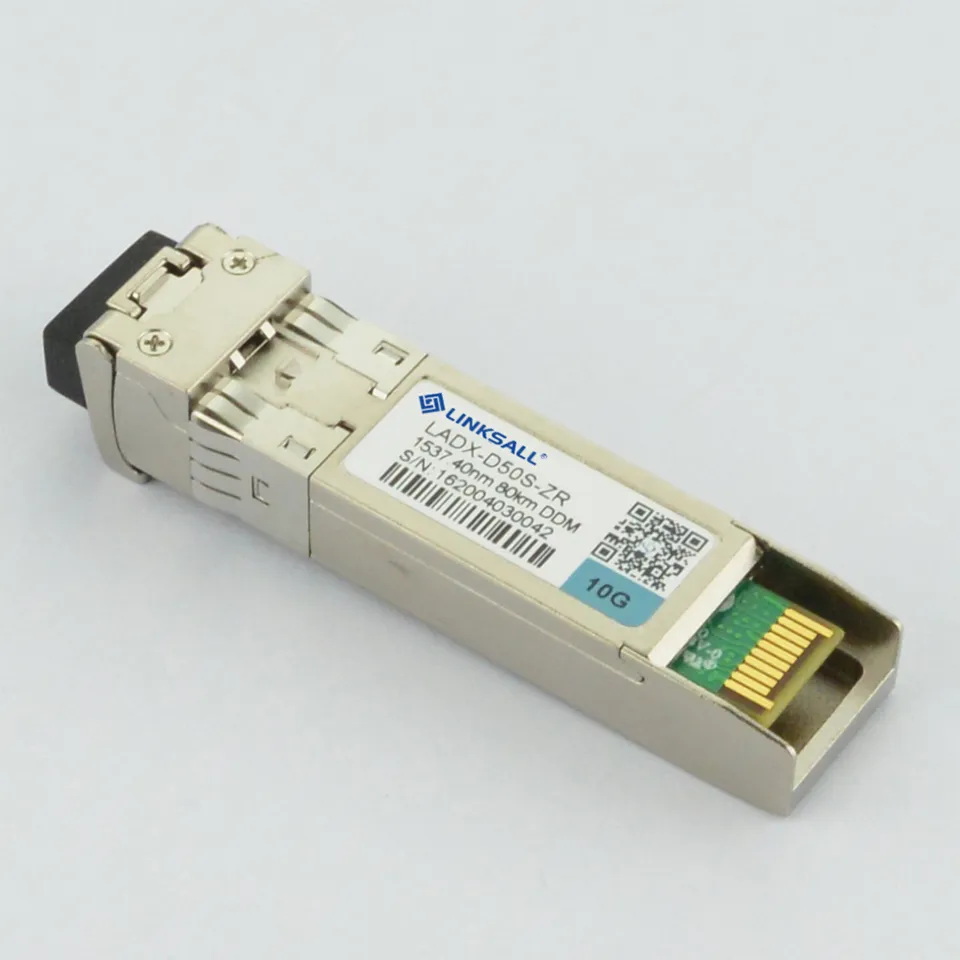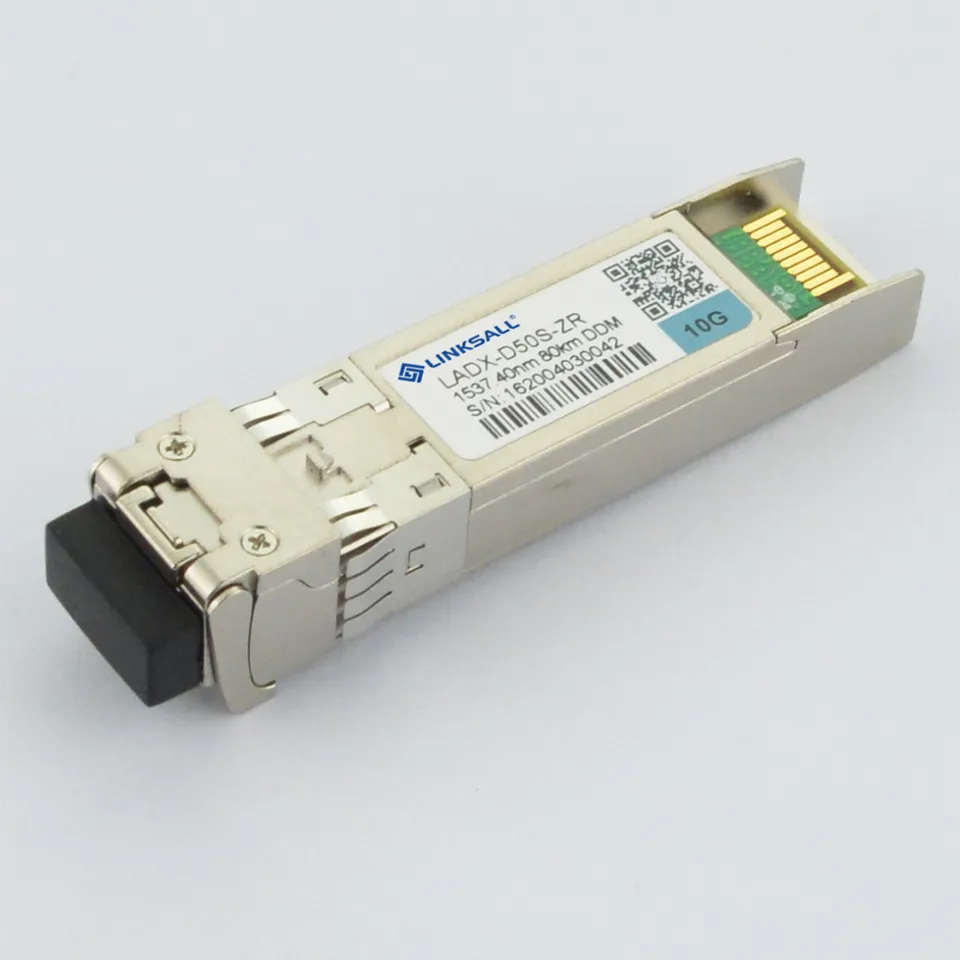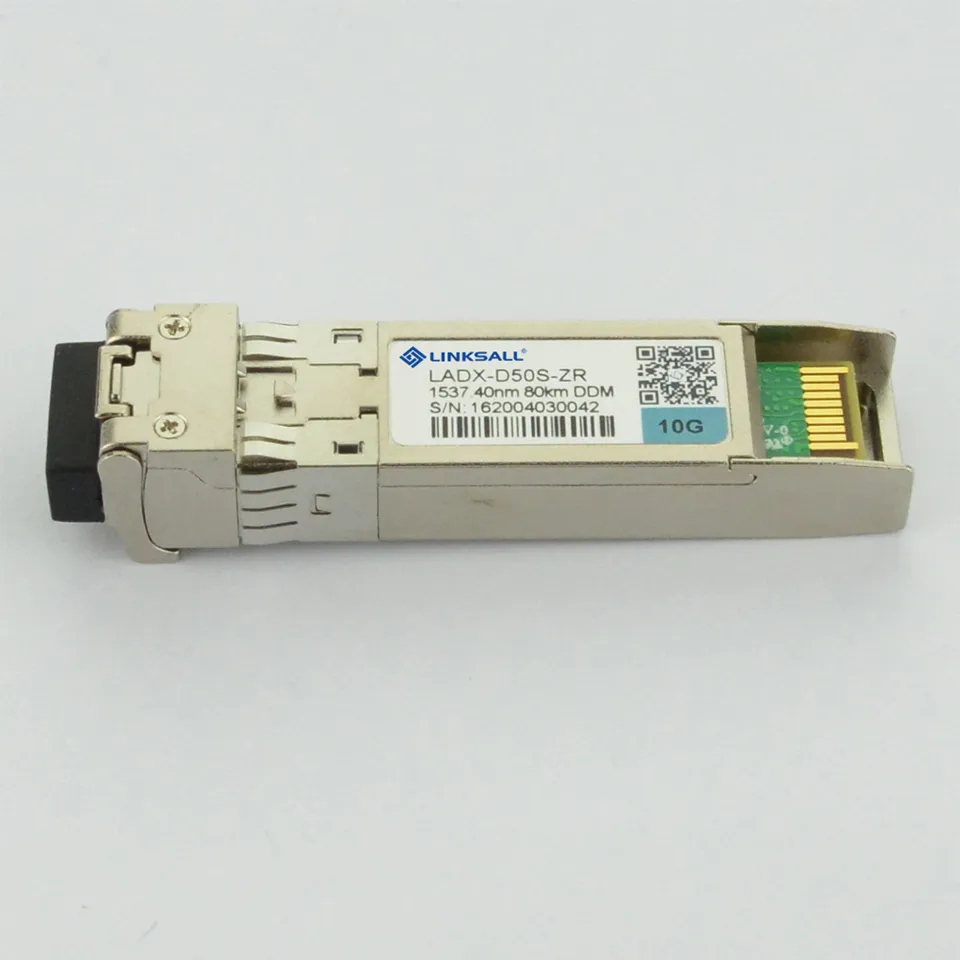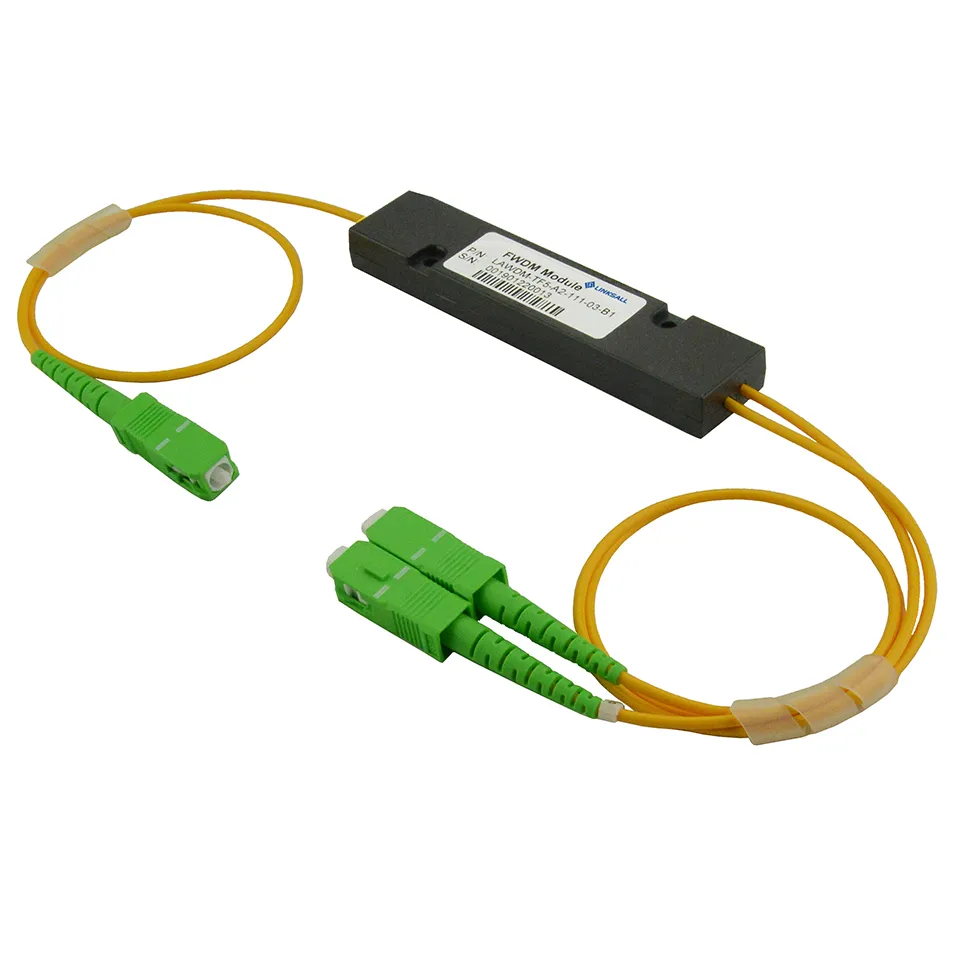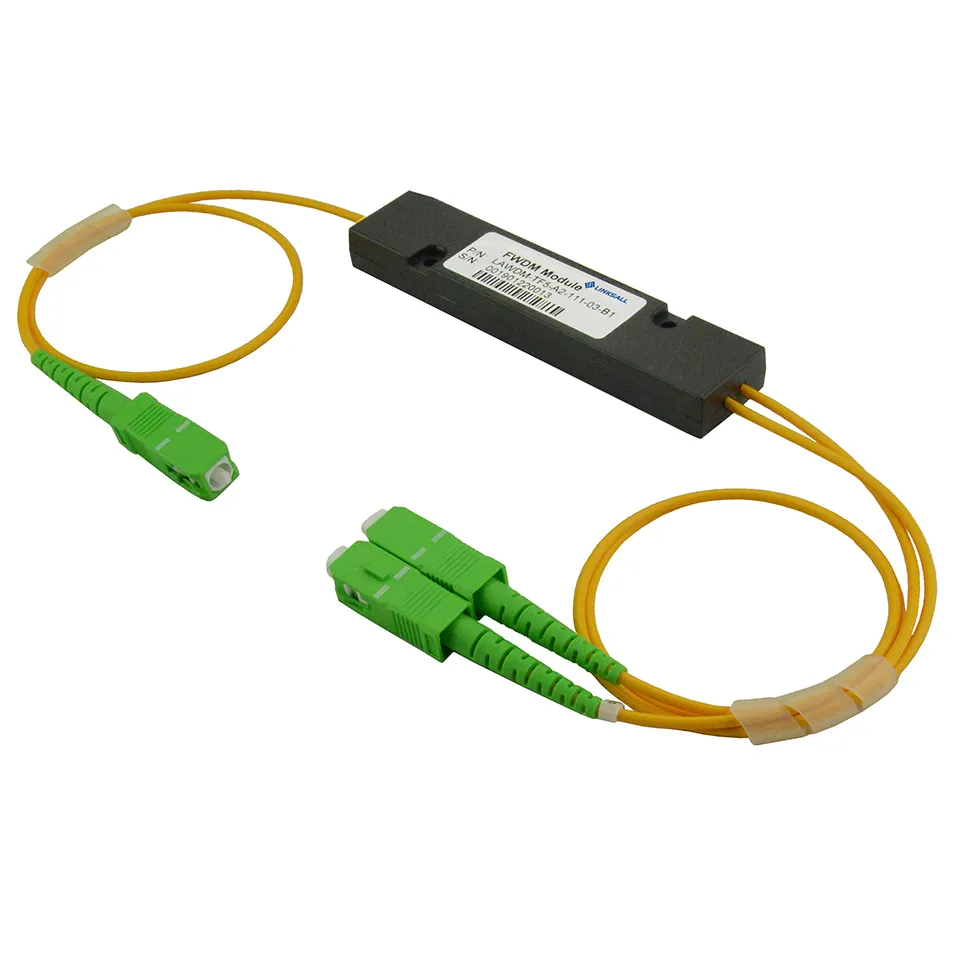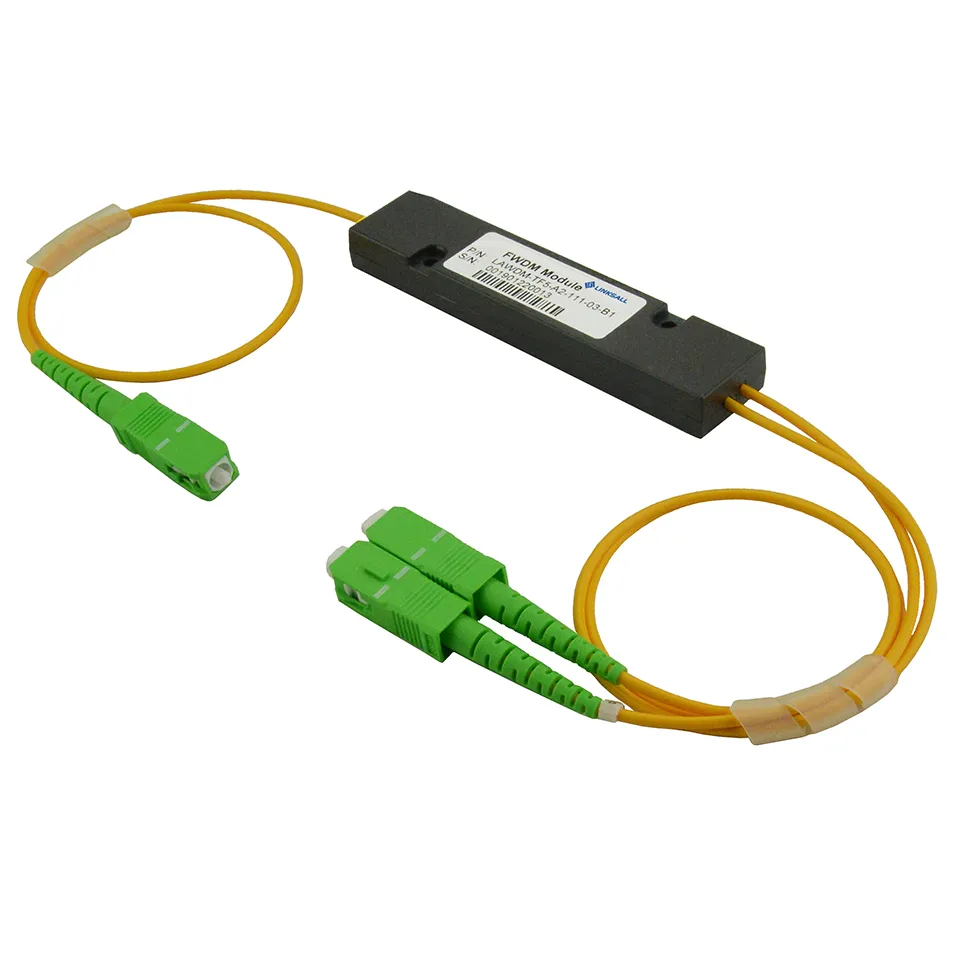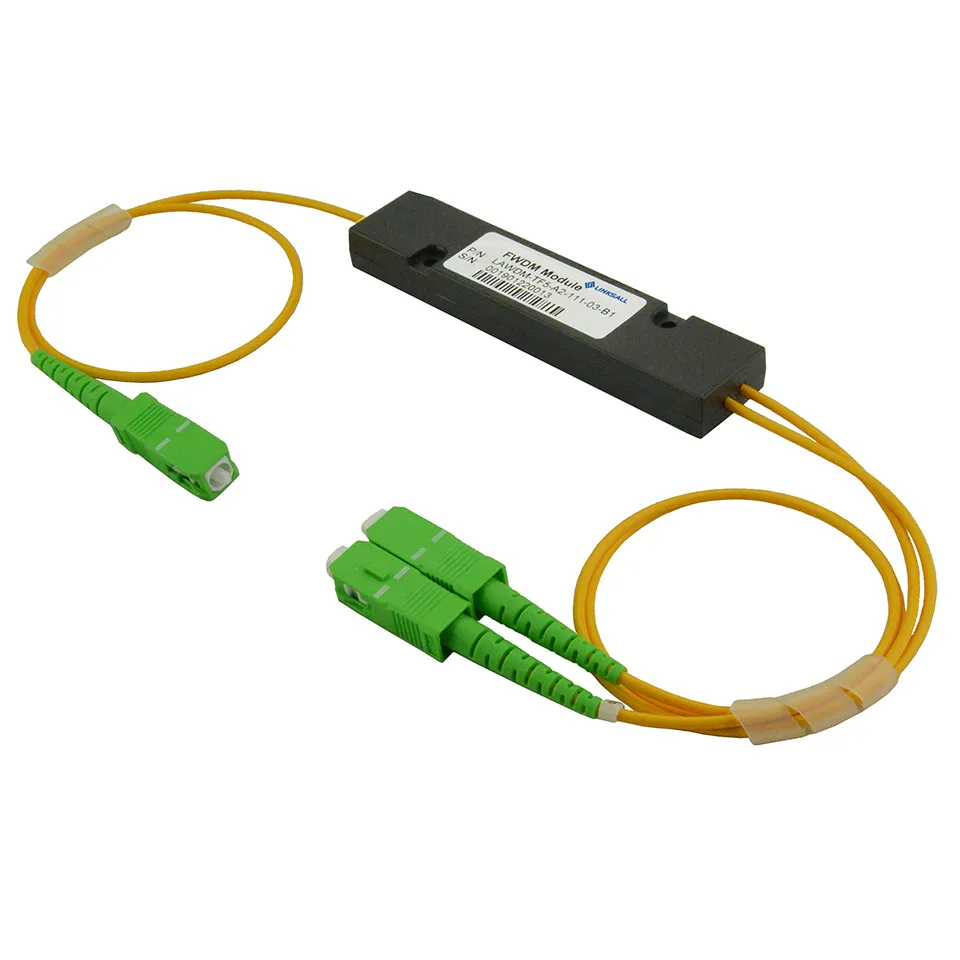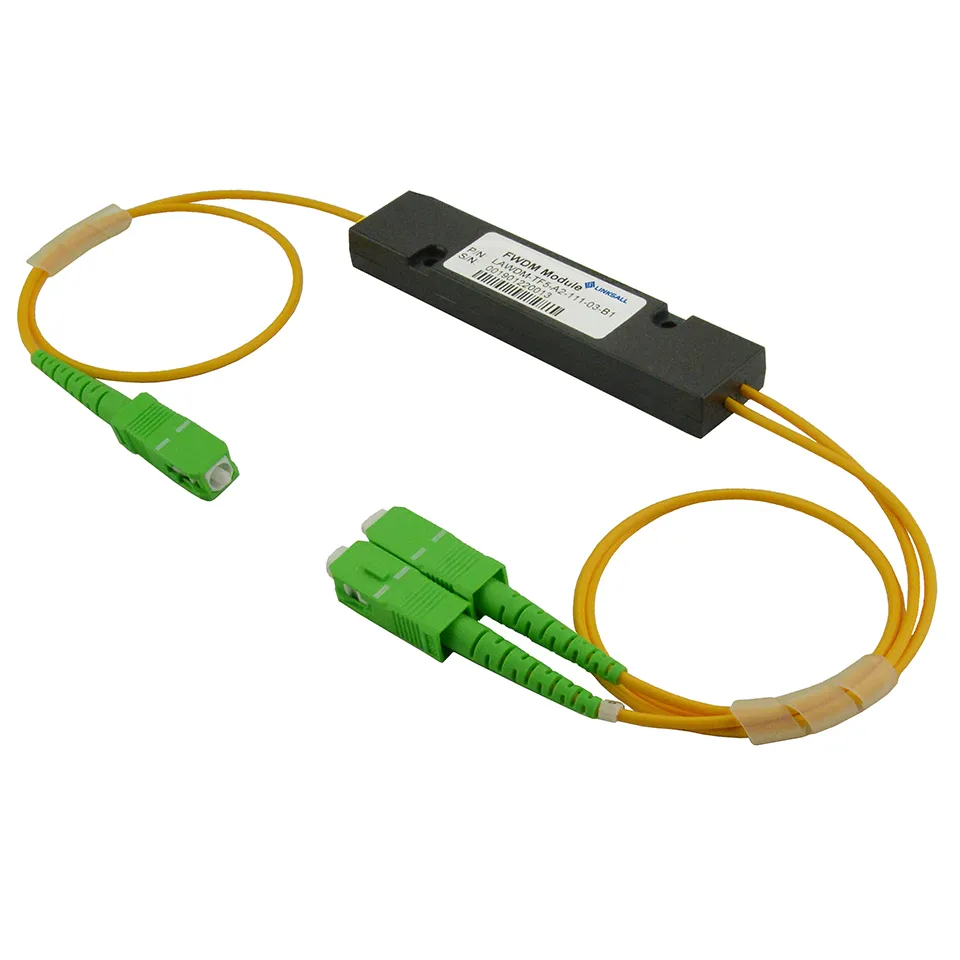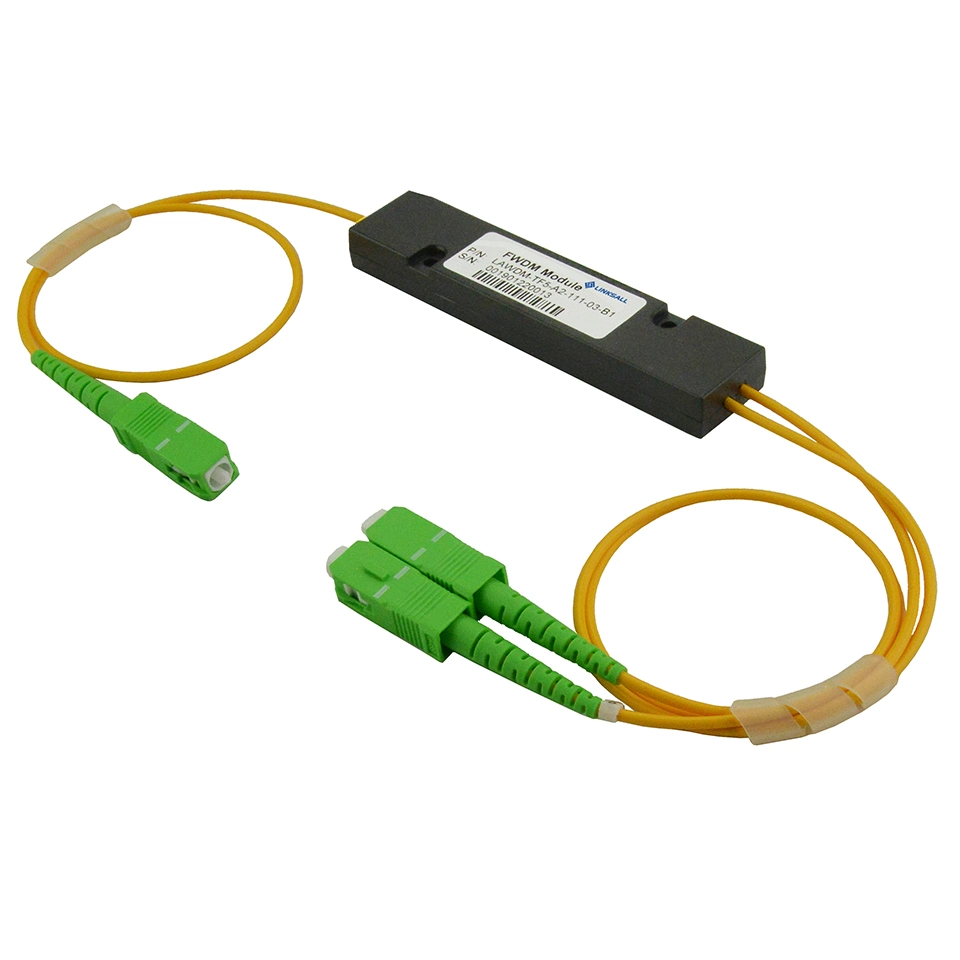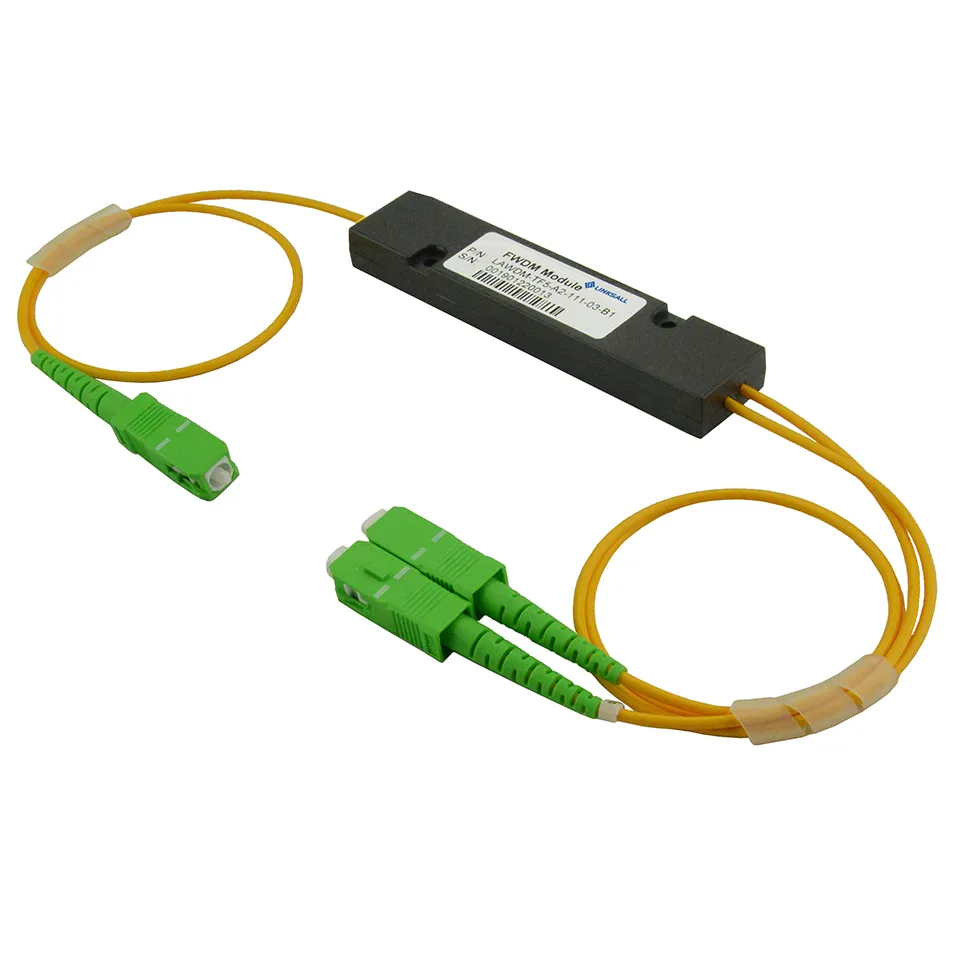Home > Products > Network Switch > Netgear C50 DWDM-SFP10g-37.40-I Compatible 10g DWDM SFP+ 100GHz 1537.40nm 80km Industrial Dom Transceiver Module
Netgear C50 DWDM-SFP10g-37.40-I Compatible 10g DWDM SFP+ 100GHz 1537.40nm 80km Industrial Dom Transceiver Module
10Gb/s DWDM SFP+ Transceiver 80KMLADX-DxxS-ZRProduct FeaturesSupports 9.95 to 11.3Gb/s bit ratesHot-PluggableDuplex LC receptacle100GHz ITU Grid, C BandDWDM EML transmitter, APD photo-detectorSMF links up to 80km2-wire interface for management specifications compliant with SFF 8472 digital diagnosti......
Send Inquiry
Product Description
10Gb/s DWDM SFP+ Transceiver 80KM
LADX-DxxS-ZR
Product Features
- Supports 9.95 to 11.3Gb/s bit rates
- Hot-Pluggable
- Duplex LC receptacle
- 100GHz ITU Grid, C Band
- DWDM EML transmitter, APD photo-detector
- SMF links up to 80km
- 2-wire interface for management specifications compliant with SFF 8472 digital diagnostic monitoring interface
- Power Supply :+3.3V
- Power consumption<1.5W
- Temperature Range: 0~ +70°C
- RoHS compliant
- 10Gbps DWDM Optical systems
- 10G SONET/SDH, OTU2/2e and 10G FC
- LTE systems
- Other Optical links
- Compliant to SFF-8431
- RoHS Compliant.
Description
The SFP+ transceivers are high performance, cost effective modules supporting data rate of 10Gbps and 80km transmission distance with SMF.
The transceiver consists of three sections: a Cooled EML laser transmitter, an APD photodiode integrated with a trans-impedance preamplifier (TIA) and MCU control unit. All modules satisfy class I laser safety requirements.
The transceivers are compatible with SFP Multi-Source Agreement and SFF-8472 digital diagnostics functions.
Absolute Maximum Ratings
| Parameter | Symbol | Min. | Typ. | Max. | Unit | Note |
| Storage Temperature | Ts | -40 | - | +85 | ºC | |
| Relative Humidity | RH | 5 | - | 95 | % | |
| Power Supply Voltage | VCC | -0.3 | - | 4 | V | |
| Signal Input Voltage | Vcc-0.3 | - | Vcc+0.3 | V |
| Parameter | Symbol | Min. | Typ. | Max. | Unit | Note |
| Case Operating Temperature | TOP | 0 | - | +70 | ºC | Without air flow |
| Power Supply Voltage | VCC | 3.14 | 3.3 | 3.47 | V | |
| Power Supply Current | ICC | - | 450 | mA | ||
| Data Rate | BR | 10.3125 | 11.3 | Gbps | ||
| Transmission Distance | TD | - | 80 | km | ||
| Coupled fiber | Single mode fiber | 9/125um SMF | ||||
Electrical Characteristics
| Parameter | Symbol | Min. | Typical | Max. | Unit | Note |
| Supply Voltage | Vcc | 3.135 | 3.465 | V | ||
| Supply Current | Icc | 450 | mA | |||
| Power Consumption | P | 1.5 | W | |||
| Transmitter | ||||||
| Input differential impedance | Rin | 100 | Ω | 1 | ||
| Tx Input Single Ended DC Voltage Tolerance (Ref VeeT) | V | -0.3 | 4 | V | ||
| Differential input voltage swing | Vin,pp | 180 | 700 | mV | 2 | |
| Transmit Disable Voltage | VD | 2 | Vcc | V | 3 | |
| Transmit Enable Voltage | VEN | Vee | Vee+0.8 | V | ||
| Receiver | ||||||
| Single Ended Output Voltage Tolerance | V | -0.3 | 4 | V | ||
| Rx Output Diff Voltage | Vo | 300 | 850 | mV | ||
| Rx Output Rise and Fall Time | Tr/Tf | 30 | ps | 4 | ||
| LOS Fault | VLOS fault | 2 | VccHOST | V | 5 | |
| LOS Normal | VLOS norm | Vee | Vee+0.8 | V | 5 | |
- Connected directly to TX data input pins. AC coupling from pins into laser driver IC.
- Per SFF-8431 Rev 3.0
- Into 100 ohms differential termination.
- 20%~80%
- LOS is an open collector output. Should be pulled up with 4.7k - 10kΩ on the host board. Normal operation is logic 0; loss of signal is logic 1. Maximum pull-up voltage is 5.5V.
Optical Characteristics
| Parameter | Symbol | Min. | Typical | Max. | Unit | Note |
| Transmitter | ||||||
| Optical Wavelength-End Of Life | λ | X-100 | X | X+100 | pm | |
| Optical Wavelength-Beginning Of Life | λ | X-25 | X | X+25 | pm | |
| Average Optical Power | Pavg | 0 | +5 | dBm | 1 | |
| Laser Off Power | Poff | -30 | dBm | |||
| Extinction Ratio | ER | 8.2 | dB | |||
| Transmitter Dispersion Penalty | TDP | 3.0 | dB | 2 | ||
| Relative Intensity Noise | Rin | -128 | dB/Hz | 3 | ||
| Optical Return Loss Tolerance | 20 | dB | ||||
| Receiver | ||||||
| Center Wavelength | λr | 1480 | 1565 | nm | ||
| Receiver Sensitivity (OMA) | Sen | -23 | dBm | 4 | ||
| Stressed Sensitivity (OMA) | SenST | -21 | dBm | 4 | ||
| Los Assert | LOSA | -40 | - | dBm | ||
| Los Dessert | LOSD | -24 | dBm | |||
| Los Hysteresis | LOSH | 0.5 | dB | |||
| Overload | Sat | -7 | dBm | 5 | ||
| Receiver Reflectance | Rrx | -12 | dB | |||
- Average power figures are informative only, per IEEE802.3ae.
- TWDP figure requires the host board to be SFF-8431compliant. TWDP is calculated using the Matlab code provided in clause 68.6.6.2 of IEEE802.3ae.
- 12dB reflection.
- Conditions of stressed receiver tests per IEEE802.3ae. CSRS testing requires the host board to be SFF-8431 compliant.
- Receiver overload specified in OMA and under the worst comprehensive stressed condition.
Timing Characteristics
| Parameter | Symbol | Min. | Typical | Max. | Unit |
| TX_Disable Assert Time | t_off | 10 | us | ||
| TX_Disable Negate Time | t_on | 1 | ms | ||
| Time to Initialize Include Reset of TX_FAULT | t_int | 300 | ms | ||
| TX_FAULT from Fault to Assertion | t_fault | 100 | us | ||
| TX_Disable Time to Start Reset | t_reset | 10 | us | ||
| Receiver Loss of Signal Assert Time | TA,RX_LOS | 100 | us | ||
| Receiver Loss of Signal Deassert Time | Td,RX_LOS | 100 | us | ||
| Rate-Select change Time | t_ratesel | 10 | us | ||
| Serial ID Clock Time | t_serial-clock | 100 | kHz |
Pin Assignment
Diagram of Host Board Connector Block Pin Numbers and Name
Pin Function Definitions
| 0 | Symbol | Name/Description | Ref. |
| 1 | VEET | Transmitter Ground (Common with Receiver Ground) | 1 |
| 2 | TFAULT | Transmitter Fault. | 2 |
| 3 | TDIS | Transmitter Disable. Laser output disabled on high or open. | 3 |
| 4 | SDA | 2-wire Serial Interface Data Line | 4 |
| 5 | SCL | 2-wire Serial Interface Clock Line | 4 |
| 6 | MOD_ABS | Module Absent. Grounded within the module | 4 |
| 7 | RS0 | RS0 for Rate Select: Open or Low = Module supports 1.25 Gb/s High = Module supports 9.95 Gb/s to 10.3125 Gb/s | 5 |
| 8 | LOS | Loss of Signal indication. Logic 0 indicates normal operation. | 6 |
| 9 | RS1 | No connection required | 1 |
| 10 | VEER | Receiver Ground (Common with Transmitter Ground) | 1 |
| 11 | VEER | Receiver Ground (Common with Transmitter Ground) | 1 |
| 12 | RD- | Receiver Inverted DATA out. AC Coupled | |
| 13 | RD+ | Receiver Non-inverted DATA out. AC Coupled | |
| 14 | VEER | Receiver Ground (Common with Transmitter Ground) | 1 |
| 15 | VCCR | Receiver Power Supply | |
| 16 | VCCT | Transmitter Power Supply | |
| 17 | VEET | Transmitter Ground (Common with Receiver Ground) | 1 |
| 18 | TD+ | Transmitter Non-Inverted DATA in. AC Coupled. | |
| 19 | TD- | Transmitter Inverted DATA in. AC Coupled. | |
| 20 | VEET | Transmitter Ground (Common with Receiver Ground) | 1 |
1. Circuit ground is internally isolated from chassis ground.
2. TFAULT is an open collector/drain output, which should be pulled up with a 4.7k - 10k Ohms resistor on the host board if intended for use. Pull up voltage should be between 2.0V to Vcc + 0.3V. A high output indicates a transmitter fault caused by either the TX bias current or the TX output power exceeding the preset alarm thresholds. A low output indicates normal operation. In the low state, the output is pulled to <0.8V.
3. Laser output disabled on TDIS >2.0V or open, enabled on TDIS <0.8V.
4. Should be pulled up with 4.7kΩ- 10kΩ host board to a voltage between 2.0V and 3.6V. MOD_ABS pulls line low to indicate module is plugged in.
5. Transceiver data rate selected through the 2-wire bus in accordance with SFF-8472 Rev. 10.5. Soft RS0 is set at Bit3, Byte 110, Address A2h. Soft RS0 default state on power up is '0' LOW, and the state is reset following a power cycle. Writing '1' HIGH selects max data rate operation. Transceiver data rate is the logic OR of the input state of the RS0 pin and soft RS0 bit. Thus, if either the RS0 pin OR the soft RS0 bit is HIGH then the selected data rate will be 9.95 and 10.3 Gb/s.
6. Loss Of Signal is LVTTL. It should be pulled up with 4.7kΩ - 10kΩ on host board to a voltage between 2.0V and 3.6V. Logic 0 indicates normal operation; logic 1 indicates loss of signal.
EEPROM Information and Management
The SFP+ transceivers support the 2-wire serial communication protocol as defined in the SFP MSA.
The standard SFP serial ID provides access to identification information that describes the transceiver's capabilities, standard interfaces, manufacturer, and other information.
Additionally, The SFP+ transceivers provide a unique enhanced digital diagnostic monitoring interface, which allows real-time access to device operating parameters such as transceiver temperature, laser bias current, transmitted optical power, received optical power and transceiver supply voltage. It also defines a sophisticated system of alarm and warning flags, which alerts end-users when particular operating parameters are outside of a factory set normal range.
The SFP MSA defines a 256-byte memory map in EEPROM that is accessible over a 2-wire serial interface at the 8 bit address 1010000X (A0h).The digital diagnostic monitoring interface makes use of the 8 bit address 1010001X (A2h), so the originally defined serial ID memory map remains unchanged.
The operating and diagnostics information is monitored and reported by a Digital Diagnostics Transceiver Controller (DDTC) inside the transceiver, which is accessed through a 2-wire serial interface. When the serial protocol is activated, the serial clock signal (SCL, Mod Def 1) is generated by the host. The positive edge clocks data into the SFP transceiver into those segments of the E2PROM that are not write-protected. The negative edge clocks data from the SFP transceiver. The serial data signal (SDA, Mod Def 2) is bi-directional for serial data transfer. The host uses SDA in conjunction with SCL to mark the start and end of serial protocol activation. The memories are organized as a series of 8-bit data words that can be addressed individually or sequentially.
Table 1. Digital Diagnostic Memory Map (Specific Data Field Descriptions)Table 2 - EEPROM Serial ID Memory Contents (A0h)
| Data Address | Length (Byte) | Name of Length | Description and Contents |
| Base ID Fields | |||
| 0 | 1 | Identifier | Type of Serial transceiver (03h=SFP) |
| 1 | 1 | Reserved | Extended identifier of type serial transceiver (04h) |
| 2 | 1 | Connector | Code of optical connector type (07=LC) |
| 3-10 | 8 | Transceiver | 10G Base-XX |
| 11 | 1 | Encoding | 64B/66B |
| 12 | 1 | BR, Nominal | Nominal baud rate, unit of 100Mbps |
| 13-14 | 2 | Reserved | (0000h) |
| 15 | 1 | Length(9um) | Link length supported for 9/125um fiber, units of 100m |
| 16 | 1 | Length(50um) | Link length supported for 50/125um fiber, units of 10m |
| 17 | 1 | Length(62.5um) | Link length supported for 62.5/125um fiber, units of 10m |
| 18 | 1 | Length(Copper) | Link length supported for copper, units of meters |
| 19 | 1 | Reserved | |
| 20-35 | 16 | Vendor Name | SFP+ vendor name |
| 36 | 1 | Reserved | |
| 37-39 | 3 | Vendor OUI | SFP+ transceiver vendor OUI ID |
| 40-55 | 16 | Vendor PN | Part Number |
| 56-59 | 4 | Vendor rev | Revision level for part number |
| 60-62 | 3 | Reserved | |
| 63 | 1 | CCID | Least significant byte of sum of data in address 0-62 |
| Extended ID Fields | |||
| 64-65 | 2 | Option | Indicates which optical SFP signals are implemented(001Ah = LOS, TX_FAULT, TX_DISABLE all supported) |
| 66 | 1 | BR, max | Upper bit rate margin, units of % |
| 67 | 1 | BR, min | Lower bit rate margin, units of % |
| 68-83 | 16 | Vendor SN | Serial number (ASCII) |
| 84-91 | 8 | Date code | Manufacturing date code |
| 92-94 | 3 | Reserved | |
| 95 | 1 | CCEX | Check code for the extended ID Fields (addresses 64 to 94) |
| Vendor Specific ID Fields | |||
| 96-127 | 32 | Readable | specific date, read only |
| 128-255 | 128 | Reserved | Reserved for SFF-8079 |
Digital Diagnostic Monitor Characteristics
| Data Address | Parameter | Accuracy | Unit |
| 96-97 | Transceiver Internal Temperature | ±3.0 | °C |
| 98-99 | VCC3 Internal Supply Voltage | ±3.0 | % |
| 100-101 | Laser Bias Current | ±10 | % |
| 102-103 | Tx Output Power | ±3.0 | dB |
| 104-105 | Rx Input Power | ±3.0 | dB |
Regulatory Compliance
The SFP+ complies with international Electromagnetic Compatibility (EMC) and international safety requirements and standards (see details in Table following).
Regulatory Compliance
| Feature | Reference | Performance |
| Electrostatic discharge(ESD) | IEC/EN 61000-4-2 | Compatible with standards |
| Electromagnetic Interference (EMI) | FCC Part 15 Class B EN 55022 Class B (CISPR 22A) | Compatible with standards |
| Laser Eye Safety | FDA 21CFR 1040.10, 1040.11 IEC/EN 60825-1,2 | Class 1 laser product |
| Component Recognition | IEC/EN 60950 ,UL | Compatible with standards |
| ROHS | 2002/95/EC | Compatible with standards |
| EMC | EN61000-3 | Compatible with standards |
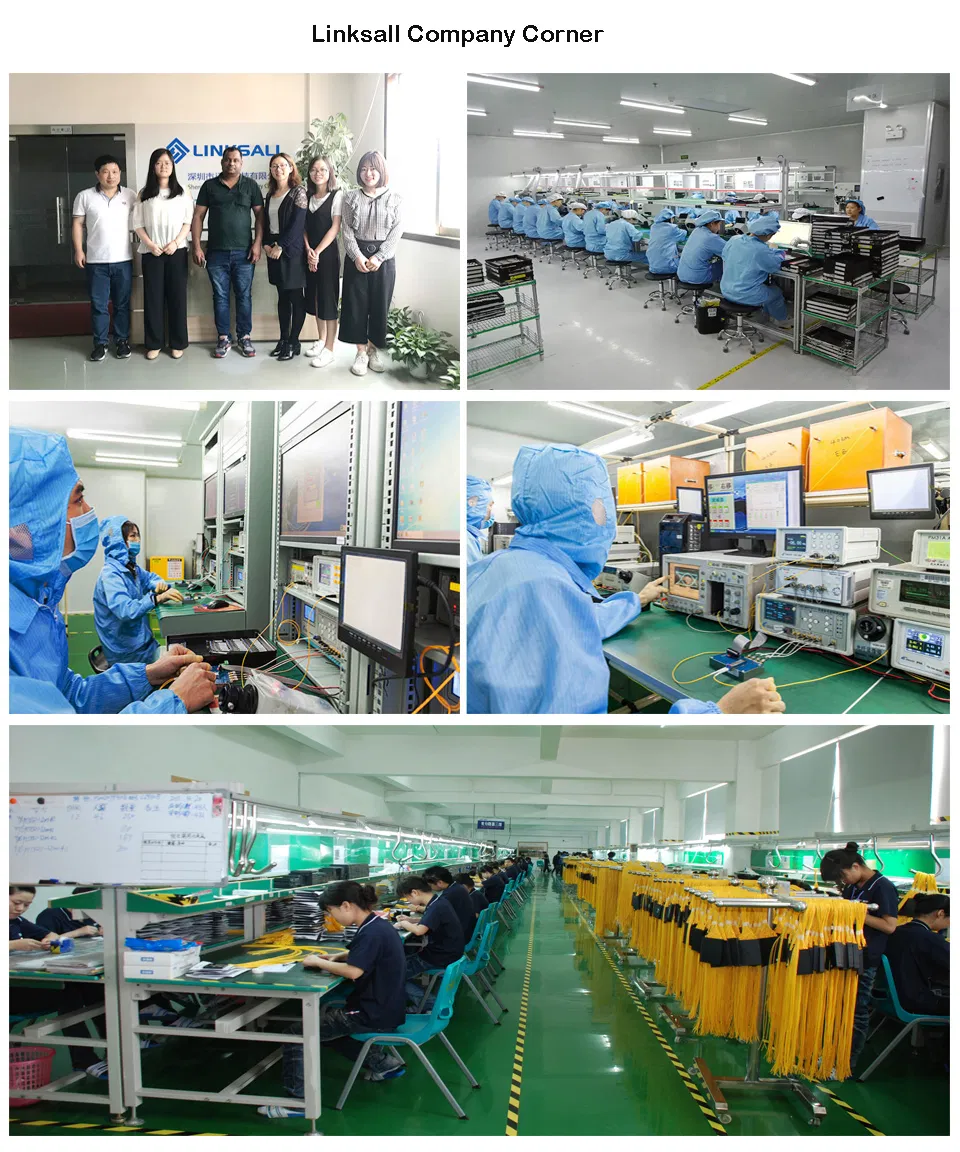
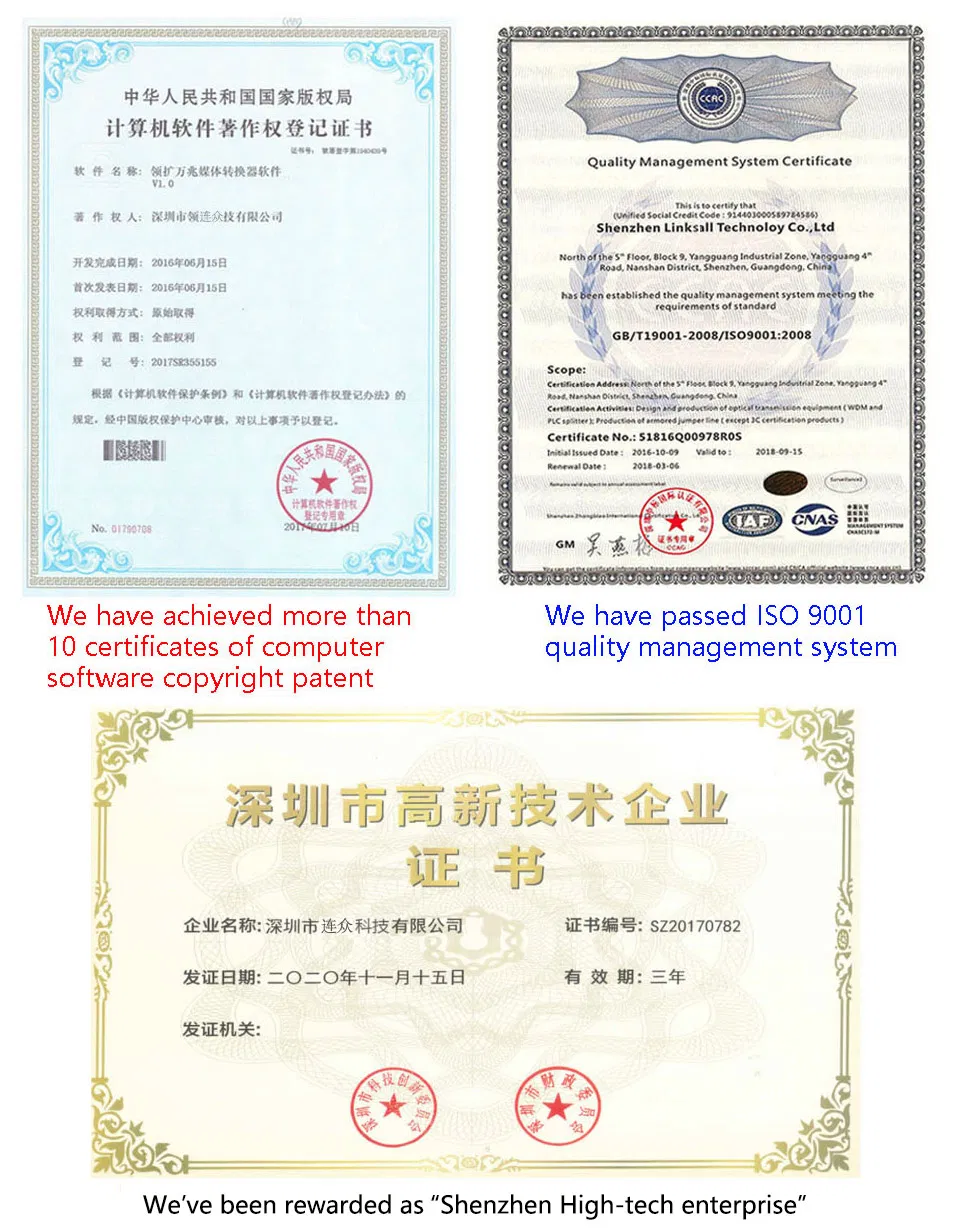

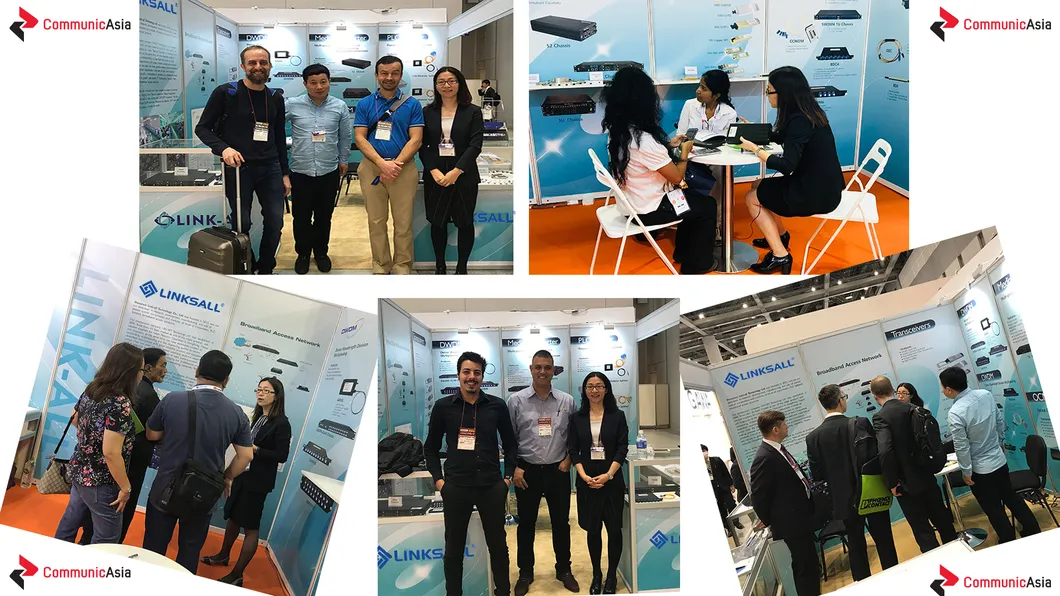

Related Category
Send Inquiry
Please Feel free to give your inquiry in the form below. We will reply you in 24 hours.


